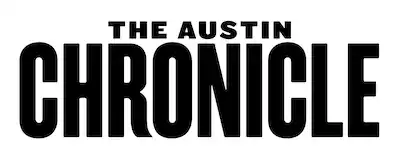https://www.austinchronicle.com/screens/2010-03-12/977579/
Quiet on the Set
Less talk, more action: Aaron Katz and Cris Lankenau sound off on 'Cold Weather'
By James Renovitch, March 12, 2010, Screens
Listening to the star of Cold Weather, Cris Lankenau, talk about his favorite moments of the movie, it's easy to tell he takes pride in the final product. As he goes on about one of his favorite lines from writer/director Aaron Katz's latest film, the excitement is contagious. That is, until Katz joins the conversation:
Katz: I've got bad news for you, Cris. That didn't make it into the movie.
Lankenau: It didn't!? Oh my god. I don't know what you guys do in that editing room. [Both laugh.]
Katz: We got a list of your favorite parts and cut them out.
Katz apparently plays the tyrant in the editor's chair, a seat that many writers shy away from for fear of losing perspective and hurting the final product. Producers and friends Ben Stambler and Brendan McFadden ensured that Katz didn't get lost in the telling of the story, about a brother and sister who live together in Portland, Ore., after the brother's failed attempt at relocating to Chicago. "I think that's a big pitfall: You feel so committed to how you were hoping things would turn out that you don't see how things are and all the great things that maybe you weren't expecting," says Katz of the editing process. For a movie that sets the camera rolling for long periods of silence that speak volumes, deciding how much quiet to let hit the cutting-room floor is a delicate process.
Via conference call from their respective homes in Brooklyn and Pittsburgh, Lankenau reminisces with Katz about filming a scene on the shores of Oregon: "I don't remember if it was in the script or not, but there was a part where you said, 'We're just going to shoot from over here, and you guys are just going to sit here and eat your sandwiches.'" The result is a telling early scene that reveals much about the bond between siblings Doug (Lankenau) and Gail (Trieste Kelly Dunn) but that also gives a sense that the trip to the beach is an escape from something unspoken.
Thus, the film begins as something beautiful, meditative, and almost sleepy. The overcast skies of Portland seem to seep into the characters and make their exchanges slightly muted but wholly believable. Lankenau describes the quickly forged friendship between himself and Dunn, saying: "By the time we got to the fourth or fifth day, it just seemed like: 'This is my only friend in the world. All the rest of the people I know are back in New York, and I'm out here in Portland, and this person is all I have.'" That fast-established intimacy pays off in achingly quiet scenes that say as much with silence and subtle body movements as with conversation.
At roughly the halfway point, Cold Weather takes a turn toward the action end of the movie spectrum, albeit with Katz's consistent eye for the unassuming moment. Suddenly Doug and Gail find themselves trying to solve the mystery of a missing person, complete with stakeouts, car-tailing, getaway cars, and enough suspense to legitimately be called a thriller. Playing down his action-movie star status, Lankenau says, "All you really have to do is run fast and do things on cue. It's not like I had to give some Oscar-winning performance."
However, Lankenau's attitude toward the craft of acting has changed from his role in Katz's previous film, Quiet City, to his latest turn as Cold Weather's underachiever-turned-super sleuth. Of his character's unease in Quiet City, Lankenau says: "I'm just being myself. ... All I did was pretend the camera wasn't there. That's just me. I'm that weird. I'm that awkward." But Cold Weather's increased budget, along with Lankenau's professional co-stars, challenged him in new ways: "I just felt like I needed to be on point every day. I had to get everything right because this is what these people do for a living. They take this very seriously. This is their career."
The Cold Weather shoot was a departure from the norm for Katz, too. "With Quiet City, we didn't raise money. We shot the movie for almost nothing." Katz says of the weeklong, guerrilla-style shoot. "Whereas in Cold Weather, it was a bit more traditional in terms of producers putting together financing. We put together a proposal for how we'd make the film, and we made a budget as to where all the money would go." That budget was a whopping $100,000 – roughly $100,000 more than Quiet City.
Katz's history with South by Southwest goes back to his first film, Dance Party, USA. "We made Dance Party back in 2004 and didn't really have any idea what we were going to do with it or if we'd be able to show it at a festival," Katz says. "[Former SXSW Film Festival Producer] Matt Dentler saw the film and really helped us find an audience when we weren't even sure there would be one." Katz returned to SXSW the next year, 2007, with his breakout second film, Quiet City, which would later be nominated for the Independent Spirit John Cassavetes Award.
Reflecting on their festival experience, Katz reminds Lankenau of Quiet City's premiere in New York: "I think you asked if I was going to dress up, and I think I must have said yes. Then you showed up in a suit, and I just had a T-shirt. And so did everyone else." Lankenau retorts, "I'm going to H&M tomorrow on my day off to buy an outfit for the premiere." The duo are festival pros at this point.
Cold Weather
Spotlight Premieres, World Premiere
Saturday, March 13, 7pm, Ritz 1
Tuesday, March 16, 1:15pm, Ritz 1
Thursday, March 18, 9pm, Lamar 2
Copyright © 2024 Austin Chronicle Corporation. All rights reserved.
